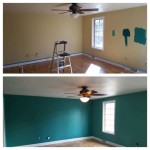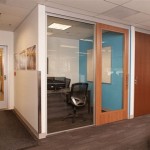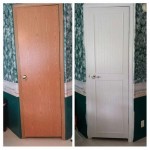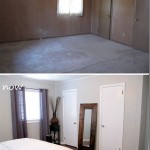Using Stick-On Panels To Update Your Interior Doors And Windows
Interior doors and windows, frequently overlooked in the grand scheme of home decor, play a pivotal role in shaping the overall aesthetic and ambiance of a living space. Updating these elements can significantly enhance the perceived value and visual appeal of a property. However, traditional renovation methods often involve substantial costs, disruption, and time commitments. Stick-on panels offer a compelling alternative, providing a cost-effective, relatively simple, and less invasive means of transforming the appearance of these essential interior features.
Stick-on panels, as the name suggests, are decorative panels designed to adhere directly to existing surfaces, typically using a strong adhesive backing. These panels are available in a diverse range of materials, styles, and finishes, allowing homeowners to customize the look of their doors and windows to suit their personal preferences and complement their existing decor. From classic raised panels to modern, minimalist designs, the options are virtually limitless.
The application of stick-on panels is generally considered a DIY-friendly project, requiring only basic tools and a moderate level of skill. This accessibility makes them an attractive option for homeowners seeking to update their interiors without the expense and complexities associated with professional installation.
Key Benefits of Using Stick-On Panels
The appeal of stick-on panels lies in their numerous advantages over traditional renovation methods. These encompass cost-effectiveness, ease of installation, versatility in design, and minimal disruption to the living environment.
Cost-Effectiveness: Replacing doors and windows can be a significant expense, involving not only the cost of the new units but also the labor costs associated with removal and installation. Stick-on panels, on the other hand, offer a fraction of the cost. The materials themselves are generally less expensive than new doors or windows, and the elimination of professional installation fees further reduces the overall financial burden.
Ease of Installation: The installation process for stick-on panels is relatively straightforward. It typically involves cleaning the existing surface, measuring and cutting the panels to size, and then applying them with the adhesive backing. Minimal tools are required, such as a measuring tape, a saw or utility knife for cutting, and a level to ensure proper alignment. Detailed instructions are usually provided by the manufacturer, making the process accessible even for novice DIYers. Unlike full replacement, there is no need to remove the old door or window, thus avoiding structural modifications.
Versatility in Design: Stick-on panels are available in a vast array of styles, materials, and finishes, catering to a wide range of aesthetic preferences. Whether one seeks to replicate a classic raised panel design, achieve a modern, minimalist look, or introduce a unique decorative element, there is likely a stick-on panel option to meet the need. Materials such as wood, MDF (Medium-Density Fiberboard), PVC, and even metal are commonly used, each offering its own unique characteristics in terms of appearance, durability, and maintenance requirements. Furthermore, many panels can be painted or stained to further customize their appearance.
Minimal Disruption: Traditional door and window replacements can be disruptive to the household, involving demolition, noise, dust, and potential delays. Stick-on panels, in contrast, are applied directly to the existing surfaces, minimizing disruption to the daily routine. The application process is typically clean and relatively quick, allowing homeowners to enjoy the updated look without enduring prolonged inconvenience.
Choosing the Right Stick-On Panels
Selecting the appropriate stick-on panels is crucial for achieving the desired aesthetic and ensuring long-lasting performance. Several factors should be carefully considered during the selection process, including the material, style, size, and adhesive properties of the panels.
Material Selection: The choice of material significantly impacts the appearance, durability, and maintenance requirements of the stick-on panels. Wood panels offer a classic, natural look but may require more maintenance to protect against moisture and wear. MDF panels provide a smooth, paintable surface and are generally more resistant to warping than wood. PVC panels are highly durable, moisture-resistant, and easy to clean, making them ideal for bathrooms and kitchens. Metal panels offer a modern, industrial aesthetic and are known for their durability.
Style and Design: The style of the stick-on panels should complement the existing decor and architectural style of the home. Classic raised panel designs are suitable for traditional homes, while minimalist, flat panels are better suited for modern interiors. Decorative panels with intricate patterns or textures can add visual interest to any room.
Size and Dimensions: Accurate measurements are essential to ensure that the stick-on panels fit properly on the doors and windows. Precise measurements of the existing surfaces should be taken before ordering the panels. Standard sizes are readily available, but custom sizes may be necessary for non-standard doors and windows. Trimming and cutting the panels might be required, so it is important to choose a material that is easy to work with.
Adhesive Properties: The quality of the adhesive is critical for ensuring that the stick-on panels stay securely in place over time. Opt for panels with a strong, durable adhesive that is suitable for the intended surface. Some adhesives may require priming the surface before application. It is also important to consider the temperature and humidity conditions in the room, as these can affect the adhesive's performance. Look for panels that are specifically designed for the type of surface – whether it is painted wood, metal or composite material.
Preparation and Installation Guidelines
Proper preparation and installation are essential for achieving a professional-looking result and ensuring the longevity of the stick-on panels. Following these guidelines will help ensure a smooth and successful installation process.
Surface Preparation: The surface of the door or window must be clean, dry, and free of any loose paint, dirt, or debris. Use a mild detergent and water to clean the surface, followed by a thorough rinsing and drying. Sanding the surface may be necessary to remove any imperfections or create a better surface for adhesion. For surfaces that are already painted, ensure the paint is in good condition. If the paint is flaking or peeling, it must be removed before applying the panels.
Measuring and Cutting: Accurately measure the area where the stick-on panels will be applied. Use a measuring tape and a straight edge to mark the cutting lines on the panels. A saw or utility knife can be used to cut the panels to size. For materials like MDF, a fine-tooth saw blade is recommended to prevent splintering. Safety precautions, such as wearing gloves and eye protection, should be taken when cutting the panels.
Panel Application: Carefully peel off the backing from the adhesive and align the panel with the marked position on the door or window. Press the panel firmly onto the surface, starting from one edge and working your way across. Use a roller or a clean cloth to apply even pressure and ensure full contact between the panel and the surface. Remove any air bubbles that may form during the application process. For larger panels, it may be helpful to have an assistant to help with alignment and application.
Finishing Touches: Once the panels are installed, inspect them for any gaps or imperfections. Small gaps can be filled with caulk or wood filler. The panels can be painted or stained to further customize their appearance. A clear coat of sealant can be applied to protect the panels from moisture and wear. Clean any excess adhesive or fingerprints from the surface of the panels.
Addressing Potential Challenges
While the application of stick-on panels is generally straightforward, certain challenges might arise. Addressing these proactively can ensure a smoother and more successful project.
Adhesion Issues: If the adhesive is not strong enough, the panels may start to peel off over time. This can be caused by inadequate surface preparation, improper adhesive selection, or environmental factors such as high humidity. To address this, ensure that the surface is thoroughly cleaned and primed before applying the panels. Choose an adhesive that is specifically designed for the type of surface and the environmental conditions. If the panels start to peel off, reapply them with a stronger adhesive.
Panel Alignment: Misalignment of the panels can result in an unprofessional-looking result. To avoid this, take accurate measurements and use a level to ensure that the panels are properly aligned. Mark the positions of the panels on the door or window before applying them. If a panel is misaligned, carefully peel it off and reapply it in the correct position. However, repeated removal and reapplication can weaken the adhesive, so it is best to get it right the first time.
Cutting Imperfections: Imperfect cuts can result in gaps or overlaps between the panels. To minimize this risk, use sharp cutting tools and take your time when cutting the panels. If gaps or overlaps occur, fill them with caulk or wood filler. Sand the filler smooth and paint or stain it to match the panels.
Matching Existing Trim: Integrating the stick-on panels seamlessly with existing trim and molding can be challenging. If the panels are not perfectly flush with the trim, consider adding a small bead of caulk to fill any gaps. Alternatively, you can replace the existing trim with trim that is compatible with the thickness and style of the stick-on panels.
Ultimately, stick-on panels provide a practical and aesthetically pleasing solution for homeowners seeking to rejuvenate their interior doors and windows without undertaking extensive renovations. By carefully considering the various factors involved in selection and installation, and by addressing potential challenges proactively, one can achieve a significant transformation with minimal effort and expense.

A Guide To Updating Your Doors And Hardware Jenna Sue Design

A Guide To Updating Your Doors And Hardware Jenna Sue Design

Master Makeover Diy Plain To Paneled Door Jenna Sue Design

How To Add Trim Plain Doors The Painted Hive

How To Add Trim Plain Doors The Painted Hive

How To Add Trim Plain Doors The Painted Hive

Master Makeover Diy Plain To Paneled Door Jenna Sue Design

Master Makeover Diy Plain To Paneled Door Jenna Sue Design

Light Wood Internal False Doors Dollhouse Miniature Vinyl Door Sticker L Stick Self Adhesive Paper Windows

A Guide To Updating Your Doors And Hardware Jenna Sue Design
Related Posts








